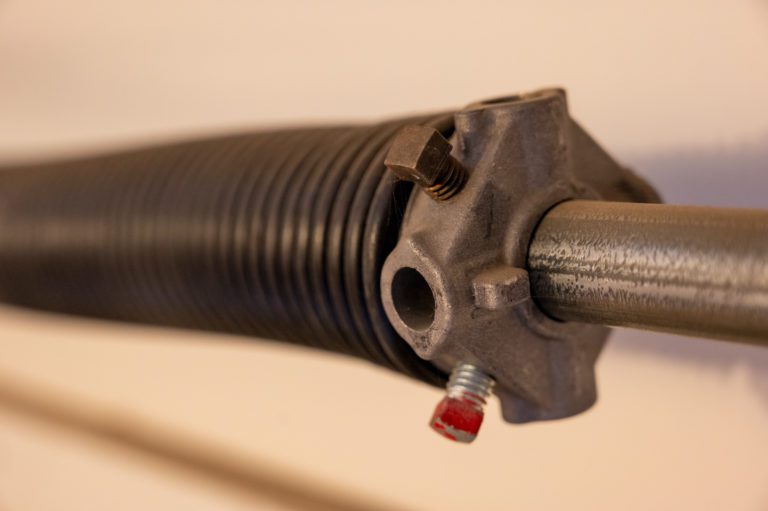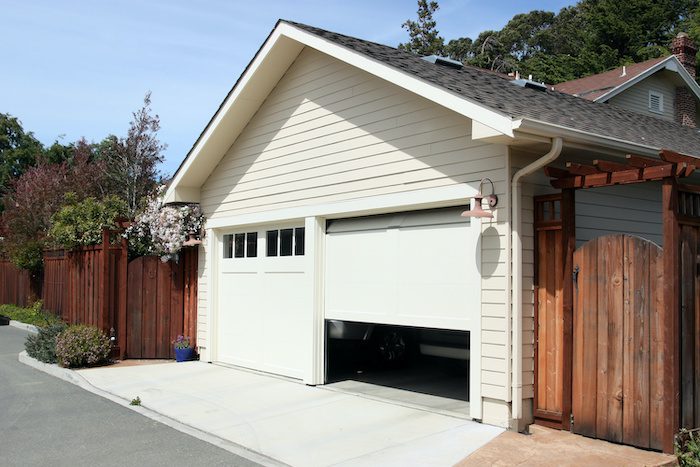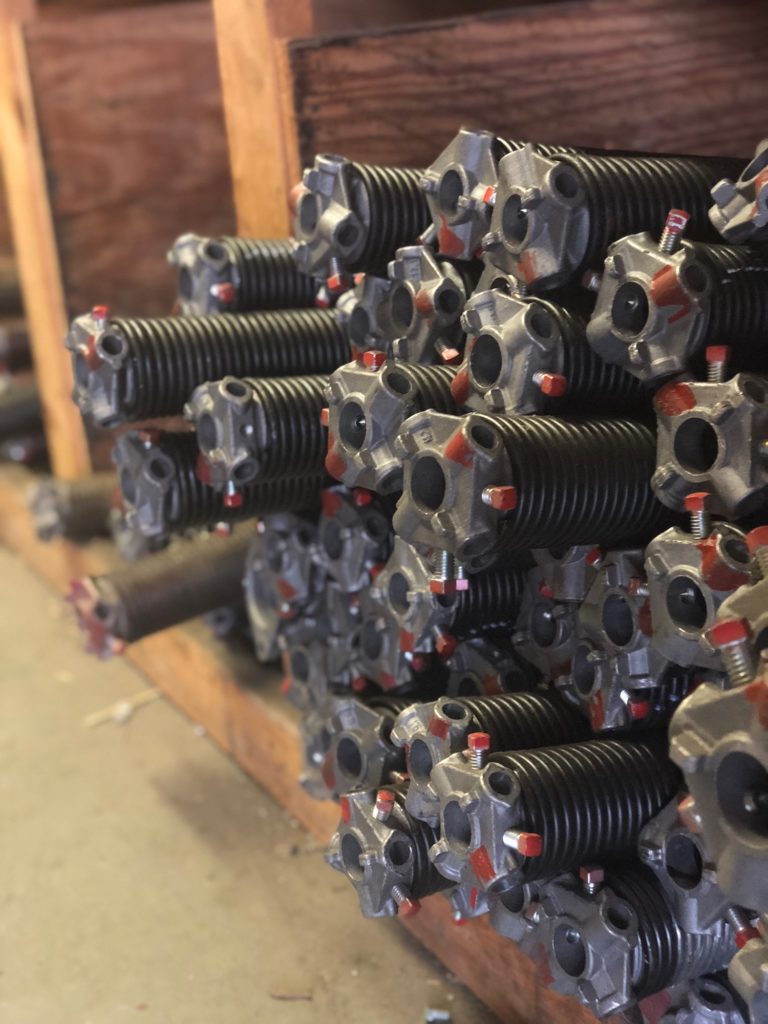Torsion and Extension Springs Explained
- The first, torsion springs are mounted above the garage door. Torsion springs store energy by coiling tightly as the door as the door closes. When the door is closed and at rest the torsion spring stores enormous amounts of energy. When you want the garage door to open, the spring helps by uncoiling and releasing that energy.
- The other, extension springs, run parallel to the tracks of the garage door and are typically situated between the tracks and the garage ceiling. Extension springs store energy by extending while the garage door is closing and then releasing the stored energy while the garage door is opening.
How Does a Torsion Spring Work?
For your garage door to open and close smoothly, the torsion spring must be in good condition and properly matched to the garage door itself. You might expect your garage door’s operator to do most of the door’s work. While the operator does expend a certain amount of energy raising and lowering the door, the door’s springs actually accept the heaviest burden.
Over time, and with exposure to the elements around them, the tension rating of a garage door spring changes. The repeated opening and closing of a garage door will gradually wear out the spring. As the spring weakens, its effectiveness is reduced. Opening the garage door will take more effort, due to the diminished capacity of the weakened spring to support the weight for you.
Without functioning torsion springs, your operator has to accept your garage door’s full weight. Without the garage door torsion spring to counterbalance the door’s weight, the motor body likely will not have the capacity to raise the weight of a garage door on its own.
Now that we understand the function of a torsion spring, it becomes more clear that a torsion spring demands sturdy construction. The torsion spring itself is much thicker than extension springs, which work in pairs in a vertical configuration on either side of the garage door. The torsion spring, in contrast, works alone, and is horizontally mounted in the center of the door opening above the door. Torsion springs are installed directly above the door opening, on the metal shaft.
The thickness and size of each garage door torsion spring is matched specifically to the weight and design of the door for which it is made. The heavier the garage door, the thicker the spring. This tension rating is intended to match the door for a consistent lifting and lowering action.
How Does an Extension Spring Work?
An extension spring on a garage door works in the way the name itself implies – by extending. Unlike most coiled springs that work when compressed, an extension spring extends when force is applied, so the coil stretches out. The force that’s stored in the spring is proportional to the amount of force it’s being subjected too. Once the force that’s being applied is removed, the energy that’s stored in a stretched spring is transferred in the opposite direction, which compresses it back into its tight, coiled shape. The extension springs attach to the track and through a series of pulleys and cables to the bottom bracket on the garage door located on the bottom section. The extension springs provide the energy needed to open the garage door while the cable and pulley system does the actual lifting. If any one of these components are damaged or not installed properly, the system will not function safely or properly.
Extension springs don’t have as many benefits as torsion springs. They’re the less expensive option of the two types of springs and don’t use much overhead space since they’re installed on the side of the door. Unfortunately, extension springs typically have more of a jerking motion when they operate which results in more wear and tear and a shorter lifespan. They can also break away and injure people and property. All extension springs should be paired with safety cables to prevent the spring from becoming a projectile in case of breakage.
















